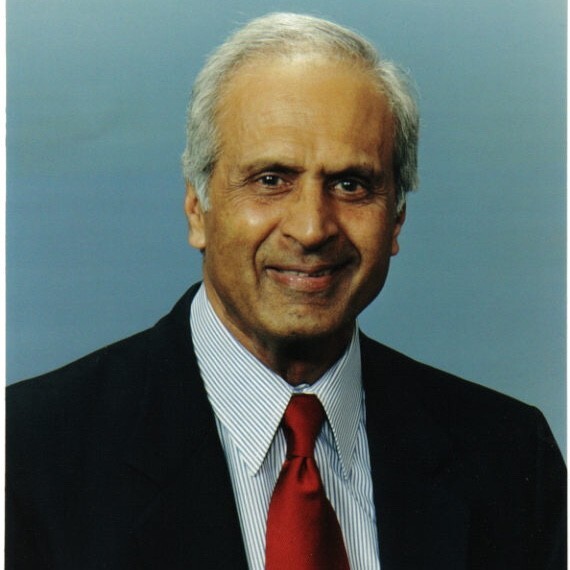“No one makes you feel inferior without your consent.”—Eleanor Roosevelt
Clients often approach me for coaching to improve their Executive Presence, interview performance, or “social” interactions with senior executives or business “rock stars.” One key insight I get in such requests is that they suffer from either a deep sense of insecurity about themselves because of their station vis-à-vis the other person (I call it Power-Distance Gap) or the certainty that they feel that they will fumble in how they communicate, act, or respond in those interactions. To many of my clients coming to me for guidance this is a common occurrence for them during a job interview process, too! The concept of Power-Distance Gap is derived from a similar concept in management interactions of employees and their superiors in different cultures pioneered by Hofstede, the famous business anthropologist, where he labeled it Power Distance Index (PDI).
Power distance is the extent to which the “lower ranking” individuals of a society accept and expect that power is distributed unequally, and it focuses on how a society manages inequalities between individuals with well understood “rules of engagement.” People in cultures with a high power distance are more likely to conform to a hierarchy where everybody has a place and which needs no further justification. In societies and communities with a low power distance, individuals in power tend to try to distribute power equally. For example, even in its heyday all top Intel executives worked in small cubicles, as did all the other employees, all the way down to the Summer Interns. In fact its then Chairman, Robert Noyce, had his name below his secretary’s name in that shared cubicle because hers was Cathy Angell (alphabetically, before his last name).
Inequalities of power among people would normally require justification. Hofstede developed his cultural dimensions theory that provides some of this justification. It is used widely as a crucial framework for cross-cultural communication. It is the earliest theory (1968-1973) that could be quantified and used to explain perceived differences between cultures. It has been applied extensively in many fields, especially in cross-cultural psychology, international business, and cross-cultural communication.
Power distance is culture driven and cultures that have inherently large PDI tend to be deeply hierarchical societies. It suggests that a society’s level of inequality is endorsed by the followers as much as by the leaders (see the Intel example above). PDI varies across cultural boundaries. For example, Germany has a PDI of 35 on the cultural scale of Hofstede’s analysis. In comparison the Middle Eastern (Arab) countries the PDI is very high (80) and Austria where it is very low (11) and US is in the middle (40). Asian countries, including India, tend to have higher PDIs than European countries. The PDI among the Silicon Valley companies is said to be in the low 20s.
How does PDI affect social interactions in a business context? Those who are raised in cultures that have high PDI tend to show more deference to their counterparts in their interactions because of their organizational status, social pedigree, or economic status. Sometimes, this deference can translate into a feeling of fear when interacting with “higher-ups” or even a feeling of inferiority, which can result in a condescending interaction in such situations.
How does the concept of PDI enter the sense of feeling Fear/Inferior during such interactions and how does one deal with it so that it does not get in the way of their success? Here are some strategies that you can use to deal with your perceived sense of fear or feeling inferior when interacting with those whose station intimidates you:
1. First make yourself aware of your anxiety around the impending interaction. If the person has already agreed to meeting with you then you must first assure yourself that they see something of value in such a meeting. Let that thought alone help you “equalize” the disparity that you may feel because of the perceived PDI when you first thought of having such a meeting with that person.
2. Calm yourself down by doing some meditation or breathing exercises before the impending meeting. Your projection of calmness will make the other person less anxious about how they must interact with you. If they see you as nervous, anxious, or cowed in fear they may perceive that you have something to hide or conceal from them and they may take a tack in their conversation that may be counterproductive to your goal in having such a meeting. Always remember and assure yourself that once such a meeting has been agreed to you are among “equals” for the duration of this meeting. So, for the best outcome “act” as if you are equals and having a conversation that benefits you both equally. For this to happen you must be at your best. Learn how to project at least ersatz “equality” (if you cannot marshal it naturally) throughout your interaction and see how empowering it is as you walk away from such meeting, having achieved what you set out to achieve!
3. Waiting three-four full seconds before responding to anyone to give yourself an opportunity to think before you speak. Confident people have faith that whomever they are talking to will patiently wait for their response (remember, you are “equals!”). They don’t feel the need to rush and respond out of fear that the person they are talking to will lose interest or think less of them. In fact, with a pregnant pause before responding this may further pique their interest and curiosity in having that conversation with you!
4. Taking up more physical space in an unfamiliar environment than you normally would. When we are nervous, fearful, and intimidated we try to take up as little physical space as possible (we shrink! Remember the phrase “shrinking violet”?). Confident people have a widened stance and keep their arms away from their bodies. If you cannot do these physical changes (physical vocabulary) and still feel cowed by the person in front of you, just admit that you are feeling nervous because of who they are and that you are talking to them. This alone may give that other person some reason to make you feel more confortable in how they will respond to you from then on. But, if you can have the presence of mind in such situations some examples of how to project a positive physical vocabulary are shown in the pictures below:
5. Not fidgeting. When we are uncomfortable, tapping our feet, playing with our hair or biting our nails takes the edge off (“nervous tick”). One of the hallmarks of confidence is simply being able to sit still—and quietly. Another is to not feel compelled to fill the silence that may exists between conversations (remember # 3, pausing 3-4 seconds for a deep thought). If you have trouble sitting still in front of someone in a position of power try smiling and making an eye contact before engaging with them.
6. When you meet with them make sure that your hands and palms are not sweaty from nervousness or stress and shake their hand with a firm handshake, making an eye contact, and smiling as you pump your hand 2-3 times after you lock your hands. A dry, firm handshake conveys confidence and self-assurance.
7. Replacing “um’s” with silence. The biggest thing one must master for peak confidence is the ability to be comfortable with silence (#3, again!). Confident people don’t feel obligated to pacify their audience with “um’s” and “ah’s.” They remain quiet until they have something valuable to say. (Some of these suggested came from Marissa Russell in recent Quora forum). The other factor that enters such conversations can be the speed of your delivery. If you feel that you are not talking fast enough because how that other person is showing their impatience at your delivery, slow down even further rather than speeding up! This is very counterintuitive.
8. Listening carefully to their choice of words and using the same words (and physical vocabulary—or body language as theirs) in your responding back to their queries. Shaking your head up and down (and NOT side to side, as some from India do) as if you are in agreement with their comments, and smiling often as you do. This shows engagement, confidence, and presence of mind.
9. Using more benign words and language when you do not agree with the person. So, instead of saying, That is just BS; I disagree with you on that one, try saying, That is an interesting perspective; I have to think about that one!
10. Even if your meeting with the “power” person completely goes south and you sense it early, keep your cool and navigate through the meeting using the suggestions above. Part on positive terms and send a great thank-you note! Those in “power” get there by not being vindictive and vengeful; they usually appreciate a courteous gesture when they see it extended to them.
11. Try using simple language and try not to get intimidated by theirs, if they choose to impress you with how much they know. Ask them to please explain what they meant by what they just said. This, too, requires presence of mind and confidence. Do not assume something by what they said and go off on a tangent, if you do not understand what they just said! Saying “I don’t know what that is” shows honesty and then saying, “ can you please explain to me what that means,” once again, shows confidence in your interaction.
These are just some strategies I ask my clients to embrace for dealing with their feeling of apprehension when they are confronted with meeting someone in “power.” This list is, by no means, complete, but a starting point on how you can now manage such interactions without feeling fear or inferior in such situations, which can compromise your own mission!
Good luck!

 SkillClick
SkillClick

